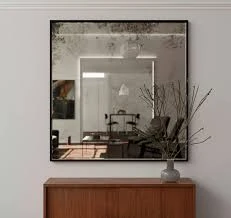

The Advantages of Infrared Reflecting Laminated Glass
In recent years, the development of glass technology has taken a significant turn towards energy efficiency and enhanced comfort in architectural design. One of the most innovative advancements in this sector is infrared reflecting laminated glass. This type of glass combines advanced optical features with safety and aesthetic value, making it a popular choice for modern buildings.
Infrared reflecting laminated glass is specifically designed to reflect a substantial amount of infrared radiation while allowing visible light to pass through. This feature is particularly advantageous in climates that experience high temperatures, as it helps to keep indoor spaces cooler. By reflecting heat, the glass reduces the reliance on air conditioning systems, consequently lowering energy consumption and costs. The incorporation of this glass into building designs can lead to significant reductions in greenhouse gas emissions, aligning with global efforts to combat climate change.
One of the primary advantages of infrared reflecting laminated glass is its ability to enhance comfort within interior spaces. Traditional glass allows both visible light and heat to penetrate, which can result in glare and discomfort for occupants. In contrast, infrared reflecting laminated glass minimizes glare while maintaining a bright and welcoming environment. This quality is especially beneficial in commercial settings, where natural light is essential but should not compromise the working conditions of employees.

Safety is another crucial aspect of laminated glass that cannot be overlooked. Infrared reflecting laminated glass is produced by sandwiching a layer of polymer interlayer between two sheets of glass. This construction not only provides thermal insulation but also adds to the strength and durability of the material. In the event of breakage, the interlayer holds the shards of glass together, reducing the risk of injury. This feature makes it an ideal option for high-traffic areas and structures that prioritize safety alongside aesthetic appeal.
Moreover, architects and designers appreciate the versatility of infrared reflecting laminated glass. It can be incorporated into various types of buildings, from residential homes to skyscrapers. The glass comes in a range of colors and finishes, allowing for creative design solutions that fit different architectural styles. The ability to customize the appearance of the glass without compromising its functionality makes it an attractive option for modern architects seeking to innovate.
In conclusion, infrared reflecting laminated glass represents a significant step forward in architectural design and energy efficiency. Its ability to reflect infrared radiation while permitting visible light enhances comfort, improves safety, and offers aesthetic versatility. As the demand for sustainable materials and energy-efficient solutions continues to grow, this glass technology stands out as a viable option for architects, builders, and homeowners alike. Embracing infrared reflecting laminated glass can lead to a brighter, safer, and more sustainable future in building design.